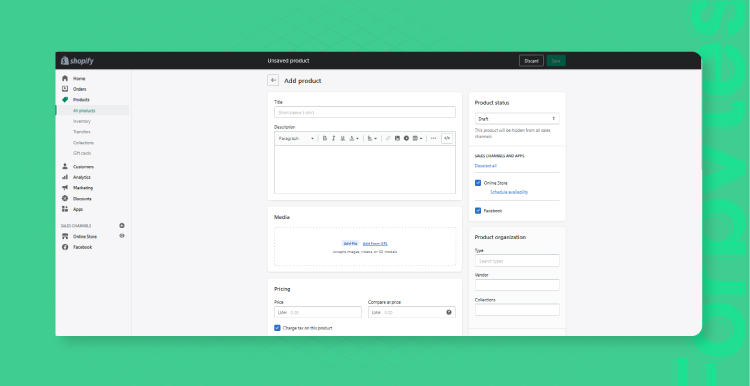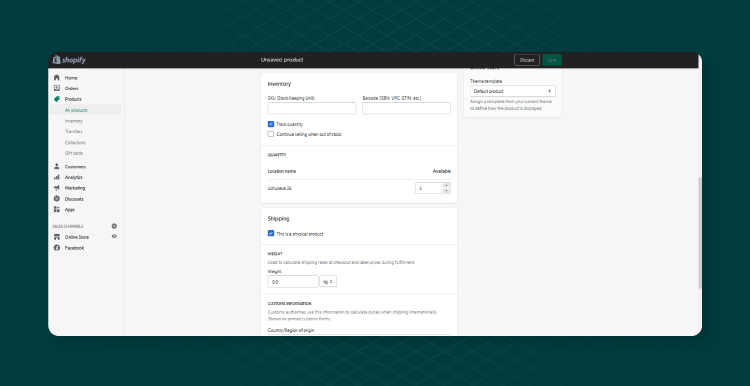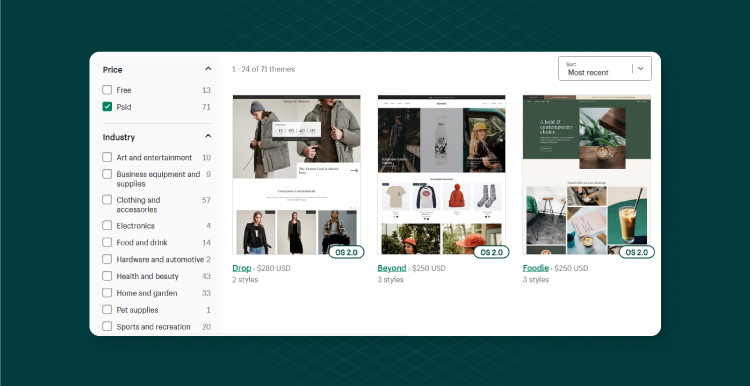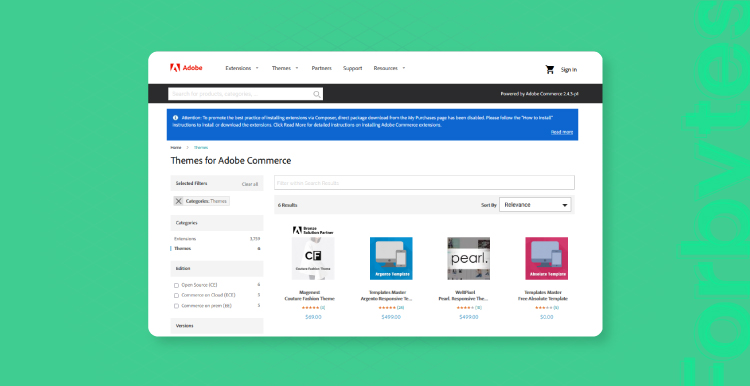The COVID-19 pandemic has changed many of our everyday habits, including how we buy and sell goods. Statista shows that in 2020 (when the outbreak of the virus happened), global retail sales decreased by 5.7%. In part, such a drop in financial performance is explained by the government regulations that forced retailers to close their physical shops. To stay in business, merchants had to find alternative routes of reaching customers. One of them was to turn to e-commerce. E-commerce platforms appeared to be a convenient engagement instrument in plenty of ways. According to Digital Commerce 360, in 2021, the share of e-commerce in global retail reached 20%. Moreover, web-only retailers became the fastest-growing merchant type, with a collective 29.8% hike.
Considering such good financial prospects for the e-commerce business, you might wonder about opening your own online shop. Which platform to choose for this goal? Open-source e-commerce platforms or SaaS? Costly options or affordable competitors? In this article, we will compare the two most popular e-commerce platforms: Magento vs Shopify.
What Is Shopify?
Shopify is a retail e-commerce platform launched in 2006 in Canada by Tobias Lütke, a prominent Ruby on Rails developer interested in e-commerce. In 2004, Lütke and his partners established an online shop that specialized in selling snowboards. Later, this shop evolved into Shopify. According to BuiltWith, at the beginning of 2022, the global audience of the Shopify app store reached 3.8 million customers selling their goods worldwide. The list of Shopify’s clients includes but is not limited to food-producing company Heinz, furniture manufacturer Leesa, cloth retailer Dressbarn, home furnishing retailer Milligram, and many others.
Why is Shopify so popular? The answer lies in what Shopify offers to its customers. It is an easy-to-setup software that allows anyone to sell their products anywhere: websites, mobile devices, social media, online marketplaces, pop-up shops. Since Shopify is completely cloud-hosted, you can access the admin panel from any location in the world to manage your business. Although many ready-to-use templates are provided, enthusiastic merchants can customize their shop as they wish (this requires technical knowledge) or even build it from the ground.
What Is Magento?
Using Magento has become a huge e-commerce trend. Magento is an open-source e-commerce platform released in 2008 by a company called Varien. During the next few years, the platform reached a significant commercial success and drew the attention of another e-commerce corporation, eBay. eBay acquired 49% ownership of the Magento marketplace in 2010. In 2018, Magento was sold to Adobe Inc. which owns and develops the platform until now.
The great convenience of a Magento store for both B2C and B2B sales is proven by several awards received during its history. For example, in 2008, Magento was acknowledged by SourceForge Community as “The Best New Project,” and in 2013, it was appraised as “The Best Open-Source Application.”
Although Magento is nowadays not as popular as Shopify, the number of Magento users is significant. According to BuiltWith, around 200,000 live websites run on Magento. The list of organizations with annual revenue of more than $2 million includes the largest museum of the Western Hemisphere Metropolitan, sports equipment retailer Asics, cloth retailer Avenue, healthcare company Medline Industries, and many others.
Now when you are acquainted with both e-commerce platforms, you might ask: Which platform for an e-commerce website is the best: Magento or Shopify? Let’s run a detailed side-by-side comparison.
Shopify vs Magento: Feature Comparison
Both Magento and Shopify provide their clients with all of the necessary features required to start selling online. These two e-commerce platforms provide the following functionality:
- Shopping cart
- Wish list
- Checkout modules
- Product collections
- Individual pages for each product
- Gift cards
Inventory Management
To make sure that you possess enough goods to sell, you need to manage your inventory. Whether you choose Shopify or Magento for your online store, you will get a convenient interface to administrate your product catalog. Both platforms allow the creation and selling of an unlimited amount of products. A new product can be added in a few clicks, and the existing ones can be edited and organized in collections. While creating a product, you can also mention the amount of product you possess so that the chosen platform automatically tracks the quantity. You can also decide whether to keep selling the product if you run out of goods.


Dropshipping
For those merchants who want to try themself in dropshipping, both Shopify and Magento are good options. These two platforms are compatible with popular dropshipping apps. The list of sourcing extensions for Shopify includes such famous apps as Handshake, Printify, Dripshipper, Creative Hub, and, of course, Oberlo (a dropshipping application owned and developed by Shopify itself). In its turn, Magento supports an extension called Dropship, developed by Webkul Software, that allows you to import products from the biggest retailer in China AliExpress.
Calculation of Shipping Charges
Another difficult task to manage for an online store that sells worldwide is to calculate the shipping fee. The taxes, as well as shipping charges, differ from country to country. It may be frustrating to keep all of this information in mind. Moreover, transparent and honest data about the shipping cost is a major factor in decreasing the cart dropping rate for any online shop. According to the UPS Pulse of the Online Shopper Survey, 34% of respondents, when asked about “the reasons for leaving shopping carts”, answered, “Shipping expenses were listed too late during the checkout process”.
The Magento e-commerce platform handles this task with a special extension called Shipping Calculator. The app supplies your clients with lots of useful information like available shipping options, the cost of each option, estimated time of delivery, highlighting the cheapest shipping way, etc. A similar extension exists inside the Shopify ecosystem. The app automatically detects your client’s geographical location and defines the available options. The shipping rates are displayed on the shopping cart page with the location indicated. So, a client has the opportunity to double-check everything and change the destination if needed.

Payment Processing
Both Magento and Shopify take this aspect seriously. To make the purchase routine as smooth as possible, Shopify has developed its own payment provider: Shopify Payments. With Shopify Payments, there is no need to set up a merchant account with a third-party payment provider. Everything needed can be accessed directly from your Shopify admin panel. The other option to manage payments with Shopify is to integrate third-party payment methods like Apple Pay, Google Pay, Amazon Pay, PayPal, or Facebook Pay. While choosing those processors, please remember that there are transaction fees set for each method.
Unlike Shopify, Magento depends mostly on third-party vendors. The best out-of-the-box solution for a Magento store is the e-commerce integration with PayPal, which is not a surprise considering that both companies once were owned by the same corporation – eBay. The other reliable payment processors you should consider include Authorize.Net and Braintree. If you are planning to operate in Europe, check Ingenico ePayments or Worldpay.
Pricing
The price of an online store launch and maintenance is a significant factor to consider when choosing an e-commerce platform. Since both platforms provide several license plans with different features included, comparing Magento 2 vs Shopify pricing policy might be tricky.
Originally being an open-source project, Magento provides two editions of its e-commerce platform:
- Magento Community Edition. It is entirely free and can be downloaded from the Magento website. The list of features in the free plan includes integrated checkout, payment and shipping, catalog management, instant purchase, and site search. While choosing this option, keep in mind that the customization and setup of the Community Edition might be complicated and require the services of a trained engineer. The other expenses include the purchase of a domain, hosting provider, SEO, and maintenance.
- Magento Enterprise Edition. Out of the box, this version of Magento comes with many sophisticated features like business intelligence, B2B functionality, dashboards, customer loyalty tools, customer segmentation, gift cards, cloud onboarding support, performance monitoring tools, and so on. A disadvantage of Magento Enterprise is its price. It will cost you $ 22,000 per year for the standard edition and at least $ 40,000 for the Magento commerce cloud. Although the advanced functionality of Magento Enterprise will accelerate your business, such great expenses for the launch of an online store might be unprofitable for cases when you are not sure of the demand for your product.
To learn more about the difference between Magento Open Source and Magento Commerce — read our blog post.
Unlike Magento, Shopify is completely a commercial product with no free plans. Luckily, the price of Shopify isn’t so high. Here are the Shopify offers: Basic Shopify will cost only $29 per month, Standard — only $79 per month, and Advanced Shopify— $299 per month. There is an option to subscribe to Shopify Plus for companies that aim to be global market leaders. For individual entrepreneurs looking for the MVP selling infrastructure, there is a Shopify Lite plan that allows adjusting a simple buy button to almost any site.
You may wonder how Advanced Shopify differs from Basic Shopify or Standart. The main difference between the described plans is the number of supported staff accounts and inventory locations, availability of international domains, and informativity of the reports. Such a diversity of printing plans makes it easy to scale up the online infrastructure as your business grows. You simply need to upgrade your current Shopify plan, and that’s it.
Visual Look
A visual appearance and the convenience of navigation are the factors that define whether the client continues browsing your online store or leaves in several seconds. Getting access to an appealing template will help you offer a better user experience and make sure that your e-commerce business is well remembered.

The choice of Shopify themes is quite poor. Currently, there are only 13 free themes available on the Shopify platform, as well as 71 paid templates. Each Shopify theme includes several styles so that the actual number of available designs is higher. The price for a theme varies from $150 to $350 and higher. The advantage of ready-to-use themes is their ease of use and setup. Everything can be arranged in several clicks. The other strong side of Shopify themes is that they are well-tested and optimized for mobile browsing. Since more than half of the world’s internet traffic is generated by mobile devices, having a convenient mobile version of an online store is a must for the business’s success.
If you want to have more control over the visual appearance of your website, you may also upload a third-party-developed theme from your desktop as a ZIP file.
Compared to Shopify, Magento provides even fewer themes. There are only six templates available on the official Adobe Marketplace. To modify the design of your Magento website, you need to contact third-party vendors, which is time and effort-consuming. Moreover, special development knowledge is also required. On the other hand, Magento provides many options for customization and grants you complete control over the design. In the hands of a skilled engineer, Magento development is a powerful tool to create a truly spectacular website.

Quality of the Client Support
Sometimes, there are situations when you might need assistance from someone inside the company to handle complicated problems of the website setup, store administration, payment processing, etc. Unfortunately, by being an open-source project, Magento Community Edition provides no additional support for their customers that would be available 24/7. To get the assistance, you will have to subscribe to the Magento Enterprise Edition, which is not cheap. On the other hand, by paying great money for the Enterprise Edition, you will get a constant phone connection with a responsible manager.
Unlike Magento Community Edition, Shopify provides more options for assistance for their clients. Shopify support team is available 24/7 and can be reached by email, live chat, or phone. Moreover, there is an informative Help Center with a detailed FAQ section.
Magento 2 vs. Shopify: Which Is Better?
The answer to this question depends on your experience in digital retailing as well as the scale of your business. You can check our comparison of e-commerce platforms for medium and big businesses to learn about other options.
By being a less complicated e-commerce platform with fewer settings and customization possibilities, Shopify is an excellent choice for beginners. Shopify ecosystem provides you with everything to start selling online out of the box. No purchase of the third-party application and extension is required. Moreover, you can also proceed with the payment with Shopify’s payment processor. The negative side of using one-size-fits-all themes is that your website loses its unique appearance and will look no different from thousands of other online stores. To enjoy all of the benefits of Shopify, you need to pay only $29, which is rather cheap.
In contrast to Shopify, Magento appears to be a platform for advanced users. To find an online shop, you have to build the website almost from scratch and take about such aspects as domain purchase, hosting provider fee, search engine optimization, etc., on your own. The number of themes and extensions available on the official Adobe Marketplace is rather low, so you will need to contact an ecommerce development company to widen the functionality of your website. The advantage of Magento is that with the right investment of money, time, and effort, you will receive a truly remarkable and unique website. The license for the Magento Community Edition is free, but you might need to hire a trained developer to set up your site.
In such a way, if you are just starting your journey through the maze of digital commerce, we recommend you to stick with the functionality that Shopify offers. If you are already managing a prosperous business and require an online shop of enterprise quality, choose Magento.
The Magento platform supports thousands of products and suites organizations that are scaling up. Advanced reports will help you to understand the performance of your business better and provide you with data-driven decision-making approaches. Moreover, Magento’s ecommerce security extensions guarantee that all your client’s data are saved. Contact us to hire veteran Magento developers and get a remarkable e-commerce store.

Our Engineers
Can Help
Are you ready to discover all benefits of running a business in the digital era?

Our Engineers
Can Help
Are you ready to discover all benefits of running a business in the digital era?







